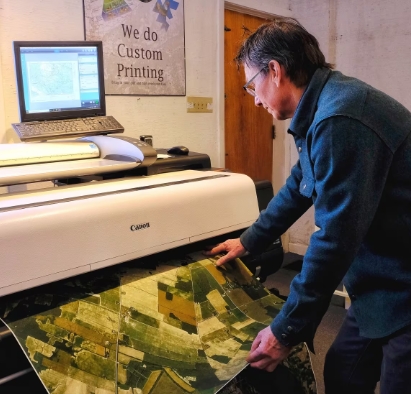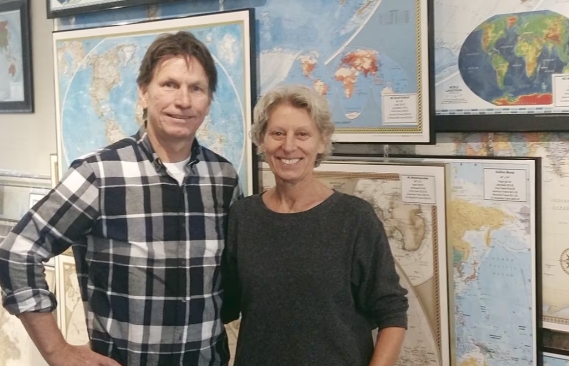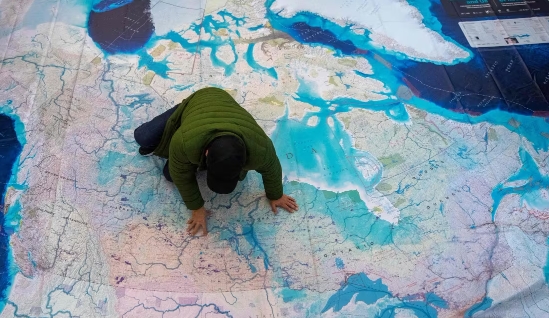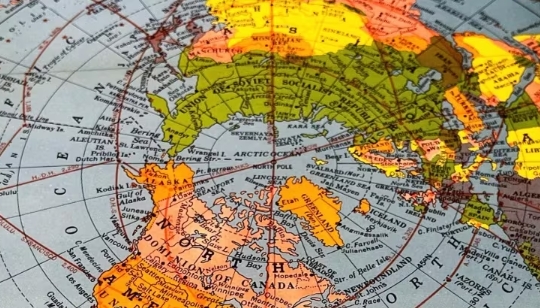A road map tucked away in your car’s glove compartment. A travel map neatly stored in your backpack. A world map adorning your wall, adorned with pins marking the countries you’ve explored.
For previous generations, maps hold a deeper meaning beyond mere paper documents— they represent our past explorations and future possibilities. However, with the rise of GPS and smartphones, the art of map-reading seems to be fading away. An article published in The Guardian in January revealed that three-quarters of UK adults struggle with reading maps, indicating a decline in this skill. Even one of the inventors of GPS expressed regret in 2019, acknowledging the downsides of his technological creation.
Professor Bradford Parkinson expressed his concern regarding the declining skill of map-reading, stating:
“The fact is that people don’t know how to read maps anymore. I love maps.”
This sentiment reflects the growing trend of individuals losing the ability to navigate and interpret maps effectively.

Brad Green, the co-owner of Ottawa’s World of Maps shop, echoes the concern about the diminishing art of map-reading. With an extensive collection of thousands of maps in stock and an electronic library housing tens of thousands more ready for printing, Green emphasizes the enduring relevance of maps in their successful business that has thrived since 1994.
According to Green, there is a genuine concern that map-reading may become a lost skill, resulting in a loss of perspective. He explains that while hyper-local phone maps offer convenience, they often lack the ability to provide a broader view. Green highlights the importance of the “big picture” that maps offer.
For instance, a map reveals that Canada shares a border with Greenland when viewed from the Arctic Circle downward, or that Point Pelee in Ontario shares the same latitude as Northern California when examining a map of North America.
With a lifelong passion for maps, Green shares that his fascination began early on. His journey into the world of maps was sparked by his love for travel, which he developed while embarking on the famous “hippie trail” from Europe to India in the 1970s, where he also met Thoms. Even now, when Green unfolds a map of India, it triggers a flood of memories. After further adventures around the globe, the couple eventually made Ottawa their home and decided to establish a travel store, driven by their shared passion.

Despite the challenges posed by the COVID pandemic, their business has continued to thrive, defying the odds faced by many small businesses. The reason, as Green highlights, is quite simple: people have an inherent love for maps. Their customer base spans across different age groups, ranging from children to seniors. Some seek outdoor maps to enhance their canoe trips, while others desire travel maps to assist them in their own adventures or historical maps to add to their collections. The diverse range of map enthusiasts keeps their business bustling with activity.
“People seek maps for various purposes, be it for decoration, information, or inspiration,” Green expressed. “Maps hold symbolic significance, and symbols possess great power.”
A form of time travel
According to George Bevan, an associate professor and passionate head of the geography and planning department at Queen’s University in Kingston, Ont., maps can be considered a form of time travel. Bevan, who teaches a course on the history of cartography, highlights how maps have the ability to transport us across time and provide insights into the past.
“Historic maps have a remarkable ability to preserve landscapes and reconstruct neighborhoods that have undergone significant changes over time”.
This is why librarians and researchers have undertaken extensive digitization efforts to ensure the preservation of these valuable maps. Additionally, Bevan points out that maps often evoke a sense of nostalgia for many individuals, further adding to their enduring appeal.
“The physical map has a similar allure, perhaps, to that of a vinyl record. It’s tangible, it’s present, and it’s not transient,” Bevan explains.
Despite the decreasing reliance on paper maps and compasses (Bevan acknowledges that the idea of using a physical map is “fairly unfamiliar” to his students), he asserts that the map as a concept remains vibrant and relevant.
According to Bevan, maps are now more intertwined with our daily routines than ever before. He highlights the widespread use of GPS, satellite view, and Google Maps as evidence of this. In the field of cartography, geographical information systems are commonly employed, utilizing databases to generate interactive maps. While online and dynamic maps lack a physical form, Bevan emphasizes that they still retain the essence of what maps represent.

Bevan draws an analogy to highlight the evolution of maps. He compares it to the shift from film cameras to digital photography, noting that the change in medium does not diminish the essence of the practice. In fact, he suggests that we are now engaged in even more map-related activities. While acknowledging the profound transformation in the medium, Bevan emphasizes that the map itself remains a fundamental component.
As the digital era increasingly shapes map-reading practices, Bevan expresses concern about the potential loss of traditional knowledge, including Inuit navigation and Polynesian star-mapping. He highlights the significance of preserving these valuable traditional methods and the rich cultural heritage they represent.
‘It’s OK to get lost’
Adam Moxham, a 41-year-old resident of Innisfail, Alberta, finds value in both digital and physical maps, recognizing that each serves a specific purpose. During a recent camping trip with his family, they relied on a physical map while at the campsite. However, for travel purposes, they typically opt for GPS navigation.
“I appreciate the reliability of physical maps, especially in situations like power outages,” he remarked.
Moxham admitted that he couldn’t pinpoint exactly how he acquired the skill of map-reading; it seems to be innate for him. When questioned about his preference for physical maps, he promptly replied that their size is what he enjoys. The ability to gain perspective without the need to zoom in or out is a distinct advantage, according to him.
And if you ever find yourself unsure of your location, a simple mark with a pencil can solve the problem.
“Getting lost occasionally is perfectly fine,” Moxham reassured.
While Green acknowledges his involvement in selling physical maps, he does admit to using digital maps for certain tasks. Nevertheless, he firmly believes that physical maps possess one unique advantage over their digital counterparts.
“No matter what, a map never runs out of batteries,” Green emphasized.

